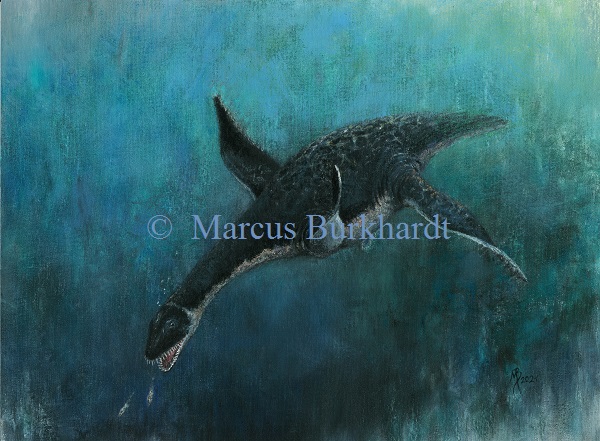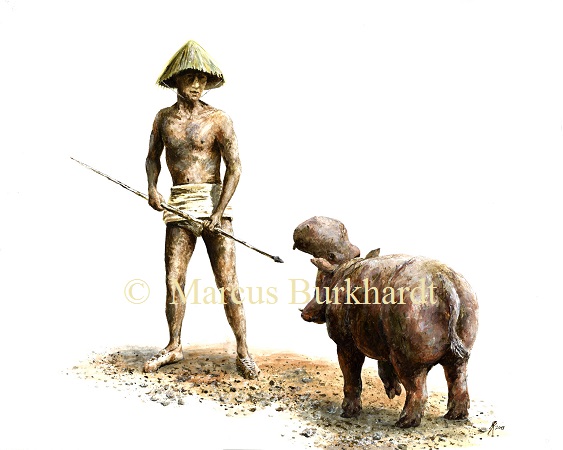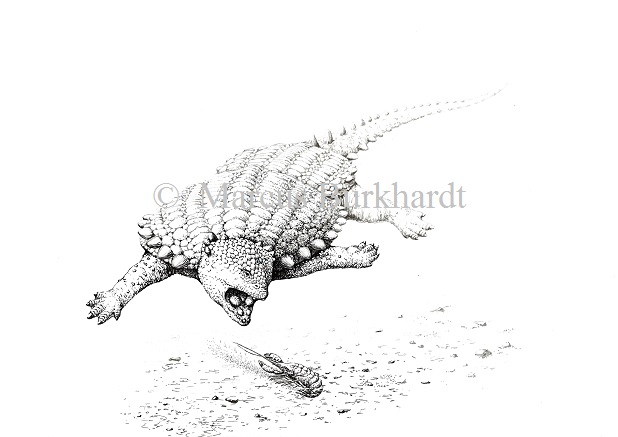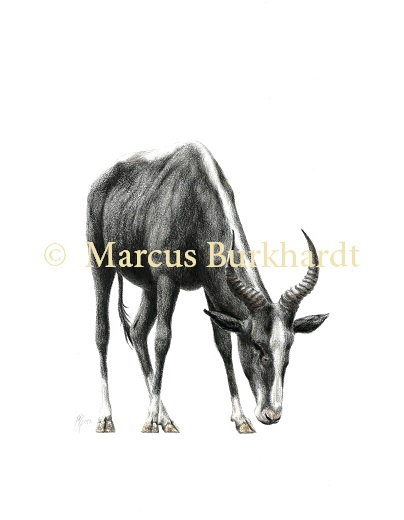
Tuebingosaurus maierfritzorum is attacked by the rauisuchian Teratosaurus suevicus. In the background is a herd of Plateosaurus engelhardti.
Acrylic and oil paint on canvas, 2021
40 x 30 cm
Commissioned by the faculty for geoscience at the Eberhard Karl University of Tübingen
Published in: O. R. Regalado Fernandez, I. Werneburg: A new massopodan sauropodomorph from Trossingen Formation (Germany) hidden as ‘Plateosaurus’ for 100 years in the historical Tübingen collection. Vertebrate Zoology 27, S. 771-822 (2022): A new massopodan sauropodomorph from Trossingen Formation (Germany) hidden as ‘ Plateosaurus’ for 100 years in the historical Tübingen (arphahub.com)












































